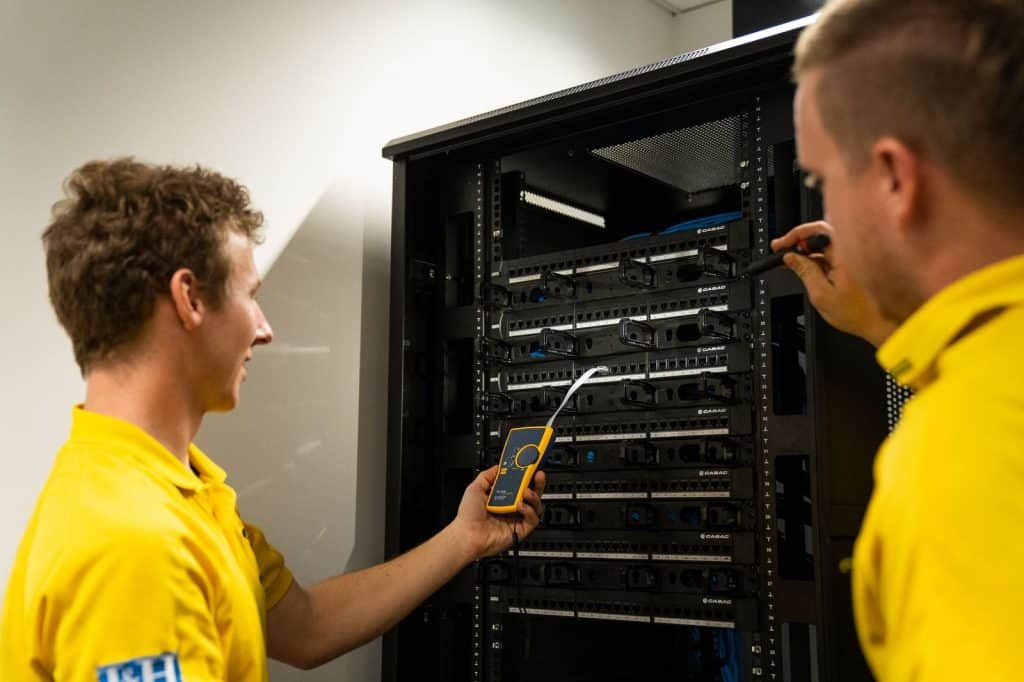A power surge occurs when the circuits in your home undergo sudden brief jolts of high electrical voltage. This can occur when the flow of electricity is interrupted and then started again, or when additional electricity flows back into the circuit. Surges can range from small scale, where you can’t even notice them, to large scale surges. Large power surges are usually caused by more rare events such as lightning strikes.
A power surge can be dangerous, as it can damage and destroy wiring and also your plugged-in devices. This puts you at risk of electrocution when handling the compromised devices, and increases the risk of an electrical fire. Consistent smaller surges can cause wire degradation over time, compromising the safety of your home.
The modern home houses dozens of electronically powered devices and appliances. Often, many of them are used simultaneously, or are being run in the background. A common cause of a power surge is an overloaded power outlet, where more power is being drawn from the circuit than what it can handle. This is often caused by utilising too many devices, and/or devices that demand a lot of power to function. If you notice frequently tripped circuit breakers, this could indicate you are drawing too much power from that particular outlet.
Faulty home wiring where wiring is damaged, exposed or improperly installed poses a heightened risk that a power surge will occur. Although due to circuits being internal, assessing whether they are damaged or not can be tricky. If you notice burning smells, burn marks or buzzing on power outlets, these are tell-tale signs of faulty wiring, and it’s extremely important that you reach out to a residential electrician immediately upon noticing any of these signs.
There are also external factors that may lead to a power surge including, lightning strikes, trees near your property touching power lines, or wildlife tampering with electrical equipment.
Although a power surge may be undetectable as it is occurring, it is important not to ignore the warning signs around your home that may suggest larger and more dangerous surges are occurring. These signs include; the flashing of digital clocks around your home, commonly used plugged in devices having automatically switched off, a surge protector on a power board flicking to the off position and a loss of WIFI connection in your home.
In regards to causing power surges, large motorised appliances such as refrigerators and air conditioning units are often culprits. This is because they turn on and off during operation, which can disrupt power flow, causing surges when they turn on again.
After a power surge has occurred, all of your plugged-in electronic devices risk being damaged, even if they are turned off. If they are plugged into a wall outlet or powerboard which is turned on, they remain at risk.

If you have noticed any of the mentioned warning signs, unplug all electronic devices and reset them. Once devices have been unplugged, reset the circuit breaker. You can then methodically test all your devices to see if they are still functioning and assess any damage.
If there has been a larger event such as a lightning strike, your best course of action is to call a 24 hour emergency electrician. It is really important that you do not try to fix the issue yourself or handle any compromised electrical appliances after a lightning strike.
There are many things you can do yourself to help protect your home from power surges.
When you get a professional Perth electrician out to inspect your home, it allows you to help protect your home against power surges. An electrician will assess the current circuits in your home, check for any overloaded outlets or signs that your home is at risk for a potential power surge. Once assessed, the electrician can install and upgrade the surge protection devices in your home, replace wiring in older homes, and upgrade any other electrical components in your home which require it.